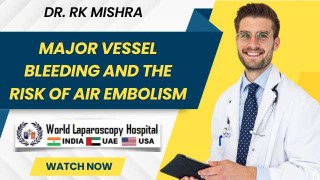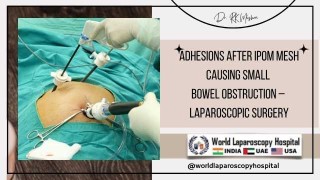Retrocecal Appendicitis: A Challenging Laparoscopic Appendectomy
Add to
Share
23 views
Report
2 days ago
Description
Retrocecal appendicitis presents one of the most technically demanding situations in laparoscopic surgery. The unusual posterior location of the appendix, hidden behind the cecum or ascending colon, makes visualization, mobilization, and safe dissection significantly more complex. At World Laparoscopy Hospital (WLH), such challenging cases are transformed into valuable educational experiences for surgeons from around the globe, combining advanced surgical training with real-time operative exposure. At WLH, the laparoscopic appendectomy for retrocecal appendicitis is performed using a methodical and anatomical approach. Under the guidance of Dr. R. K. Mishra, trainees learn the art of accessing the retrocecal space by careful mobilization of the cecum and identification of the appendix’s variable position. The use of high-definition laparoscopic visualization allows surgeons to recognize subtle anatomical landmarks, including the taenia coli and the mesoappendix, ensuring precise dissection while minimizing injury to surrounding bowel structures. What makes this case particularly educational is the emphasis on tissue handling, triangulation, and safe energy use in confined spaces. Residents and fellows observe the importance of stepwise dissection using energy devices, strategic port placement, and meticulous division of the mesoappendix and appendiceal artery. Through hands-on practice and expert supervision, trainees gain confidence in managing atypical presentations of appendicitis that would otherwise be challenging in routine practice. The World Laparoscopy Hospital’s teaching philosophy—“See One, Do One, Teach One”—is clearly reflected in these live surgeries. Each step of the procedure is discussed in detail, from diagnostic laparoscopy to stump closure using endoloops or staplers. Participants not only witness surgical precision but also learn essential decision-making skills—such as when to convert to open surgery or how to manage dense adhesions. This challenging case of retrocecal appendicitis exemplifies WLH’s commitment to advancing minimally invasive surgical education. By integrating advanced simulation, live demonstration, and practical operative exposure, the hospital prepares surgeons to confidently handle even the most complex laparoscopic appendectomy cases in their own practice. In essence, the Laparoscopic Appendectomy for Retrocecal Appendicitis at World Laparoscopy Hospital is more than just a surgery—it is a masterclass in anatomical orientation, surgical strategy, and the pursuit of excellence in minimally invasive techniques.
Similar Videos






